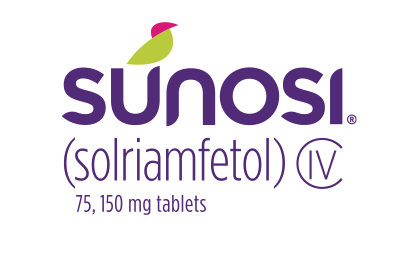Comparing Sunosi and Modafinil: Which Medication is Right for You?
Sunosi and Modafinil are commonly prescribed to manage excessive daytime sleepiness associated with narcolepsy or obstructive sleep apnea (OSA). Both medications enhance wakefulness and improve daily functioning, but they differ in their mechanisms, effectiveness, and side effects. Comparing these options helps clarify which might be the better choice based on individual needs.
Overview of Sunosi and Modafinil
What is Sunosi?
Sunosi, with the active ingredient solriamfetol, is a medication specifically approved to treat excessive daytime sleepiness in adults with narcolepsy or OSA. Solriamfetol works by inhibiting the reuptake of dopamine and norepinephrine, which helps to promote wakefulness and alertness.
What is Modafinil?
Modafinil, the active ingredient in Provigil, is approved for treating narcolepsy, OSA, and shift work disorder (SWD). While the exact mechanism of how Modafinil works is not fully understood, it is believed to influence dopamine levels in the brain to enhance wakefulness.
Mechanism of Action
How Sunosi Works
Sunosi operates as a dopamine and norepinephrine reuptake inhibitor. By blocking the reuptake of these neurotransmitters, Sunosi increases their levels in the brain, leading to enhanced wakefulness and alertness. This mechanism helps patients stay awake and alert during the day.
How Modafinil Works
The exact mechanism of Modafinil is not completely known, but it is thought to affect the brain’s dopamine system. Modafinil increases dopamine levels by inhibiting its reuptake, thereby promoting wakefulness. This mechanism is different from traditional stimulants, providing a unique approach to managing sleep disorders.
Efficacy
Effectiveness in Treating Narcolepsy
Both Sunosi and Modafinil are effective in treating narcolepsy. Clinical trials have demonstrated that both medications significantly improve wakefulness and reduce the number of sleep attacks in patients with narcolepsy.
Effectiveness in Treating OSA
For patients with OSA, both medications help reduce excessive daytime sleepiness. However, it is important to note that Sunosi and Modafinil do not treat the underlying airway obstruction in OSA. Patients should continue using treatments like continuous positive airway pressure (CPAP) while taking these medications.
Additional Uses for Modafinil
Modafinil is also approved for treating shift work disorder (SWD), a condition where excessive sleepiness occurs due to working non-traditional hours. This additional use makes Modafinil a versatile option for those with irregular work schedules.
Dosage and Administration
Sunosi Dosage Recommendations
Sunosi is typically taken once daily in the morning upon waking. The recommended starting dose is 75 mg, which can be increased to 150 mg based on the patient’s response and tolerability. It is important to follow the doctor’s prescribing instructions and not exceed the recommended dose.
Modafinil Dosage Recommendations
Modafinil is usually taken once daily in the morning, ranging from 100 mg to 200 mg. For shift work disorder, Modafinil is taken one hour before the start of the work shift. As with Sunosi, it is crucial to follow the doctor’s dosage recommendations and not exceed the prescribed amount.
Differences in Administration and Timing
While both medications are taken in the morning, Modafinil offers the flexibility of an additional dosing schedule for shift work disorder. Sunosi’s once-daily dosing is straightforward, which can be convenient for patients with consistent morning routines.
Side Effects and Risks
Common Side Effects of Sunosi
Sunosi may cause side effects such as headache, nausea, decreased appetite, anxiety, and increased blood pressure. These side effects are generally mild to moderate and may diminish as the body adjusts to the medication.
Common Side Effects of Modafinil
Modafinil can cause headaches, nausea, nervousness, dizziness, and insomnia. Like Sunosi, these side effects are typically mild and may decrease over time.
Serious Side Effects and Warnings for Both Medications
Both medications carry a risk of more serious side effects. For Sunosi, these include potential cardiovascular issues, such as increased heart rate and blood pressure. Modafinil has been associated with serious skin reactions, psychiatric symptoms, and cardiovascular events. Patients should immediately report any severe or unusual symptoms to their healthcare provider.
Risk of Misuse and Dependency
Sunosi is classified as a controlled substance due to its potential for misuse. Modafinil, while having a lower potential for abuse compared to traditional stimulants, is also a controlled substance. Patients should use these medications only as prescribed to minimize the risk of misuse and dependency.
Drug Interactions
Sunosi Interactions with Other Medications
Sunosi can interact with several other medications, potentially altering its effects or increasing the risk of side effects. Notable interactions include:
- Monoamine oxidase inhibitors (MAOIs): Taking Sunosi with MAOIs can increase the risk of hypertensive reactions.
- Stimulants: Combining Sunosi with other stimulants can amplify cardiovascular side effects like increased heart rate and blood pressure.
- Certain antidepressants: Some antidepressants may interact with Sunosi, affecting its efficacy or side effect profile.
Patients should inform their healthcare provider about all medications they are taking to avoid harmful interactions.
Modafinil Interactions with Other Medications
Modafinil also interacts with a variety of medications:
- Oral contraceptives: Modafinil can reduce the effectiveness of birth control pills, increasing the risk of unintended pregnancy.
- Anticonvulsants: Modafinil can affect the plasma levels of anticonvulsants, potentially reducing their efficacy.
- Anticoagulants: The effectiveness of anticoagulants like warfarin can be altered by Modafinil, necessitating close monitoring.
As with Sunosi, patients should discuss all medications and supplements they are using with their healthcare provider to prevent adverse interactions.
Cost and Availability
Sunosi Cost and Insurance Coverage
The cost of Sunosi can vary widely based on insurance coverage, pharmacy, and location. Sunosi is currently not available in a generic form, which typically makes it more expensive than medications with generic versions. Patients may find financial assistance through Sunosi’s manufacturer, which offers savings cards and free trial programs.
Modafinil Cost and Insurance Coverage
Modafinil is available as a generic, which can significantly lower the cost compared to the brand-name version, Provigil. Insurance plans generally provide better coverage for generic medications, making Modafinil a more affordable option for many patients. Patients can also look for coupons and discount programs to reduce out-of-pocket expenses.
Availability of Generic Versions
Currently, Modafinil has generic alternatives available, which enhances its accessibility and affordability. Sunosi, on the other hand, does not have a generic version yet, potentially limiting its availability for some patients due to higher costs.
Financial Assistance Programs and Coupons
Both medications offer financial assistance programs to help patients manage costs. Sunosi’s manufacturer provides savings cards and free trial offers, while various online platforms offer coupons for Modafinil and its generic versions. Patients should explore these options to find the most cost-effective way to access their medications.
Patient Experiences and Reviews
Summary of Patient Reviews for Sunosi
Patients who use Sunosi generally report significant improvements in wakefulness and alertness. Common positive feedback includes enhanced energy levels and better management of daytime sleepiness. However, some patients experience side effects such as increased blood pressure and anxiety, which can be concerning.
Summary of Patient Reviews for Modafinil
Modafinil receives favorable reviews for its effectiveness in improving wakefulness and cognitive function. Many patients appreciate its ability to enhance focus and reduce sleep attacks. On the downside, some users report experiencing headaches, nausea, and nervousness.
Comparative Analysis of Patient Satisfaction
Both Sunosi and Modafinil have high patient satisfaction rates for managing excessive daytime sleepiness. Sunosi users often highlight the medication’s effectiveness despite occasional cardiovascular side effects. Modafinil users appreciate the cognitive benefits, though some are concerned about headaches and potential drug interactions. Overall, patient experiences vary, emphasizing the importance of personalized treatment plans.
Pros and Cons
Advantages of Sunosi
- Effective for both narcolepsy and OSA: Sunosi is specifically approved for these conditions, providing targeted treatment.
- Once-daily dosing: Convenient for patients with consistent morning routines.
- Positive patient feedback: Many users report significant improvements in daytime alertness.
Advantages of Modafinil
- Versatile uses: Approved for narcolepsy, OSA, and SWD.
- Cognitive benefits: Some users experience enhanced focus and mental clarity.
- Availability of generics: More affordable due to generic options.
Disadvantages and Limitations of Each Medication
- Sunosi:
- Higher cost: Lack of a generic version makes it more expensive.
- Potential cardiovascular side effects: Increased heart rate and blood pressure can be concerning for some patients.
- Modafinil:
- Drug interactions: Can interact with various medications, including birth control pills and anticonvulsants.
- Headaches and nausea: Common side effects reported by users.
Conclusion
Recap of Key Points
Sunosi and Modafinil are both effective medications for managing excessive daytime sleepiness caused by narcolepsy and OSA. Each has its strengths and potential drawbacks, making the choice between them dependent on individual patient needs and conditions.
Factors to Consider When Choosing Between Sunosi and Modafinil
Patients should consider factors such as cost, potential side effects, drug interactions, and the specific condition being treated. Discussing these factors with a healthcare provider can help determine the most suitable medication.
Final Recommendations
For those seeking a medication with a straightforward once-daily dosing schedule and targeted treatment for narcolepsy and OSA, Sunosi may be the right choice. On the other hand, patients looking for a versatile and cost-effective option with cognitive benefits might prefer Modafinil. Ultimately, the decision should be made in consultation with a healthcare provider to ensure the best possible outcome.
FAQs
Is Sunosi the same as Modafinil?
No, Sunosi and Modafinil are different medications with distinct active ingredients and mechanisms of action. Sunosi contains solriamfetol, while Modafinil contains modafinil.
Which is more powerful, Sunosi or Modafinil?
Both medications are effective for their approved uses. The choice between them depends on individual patient needs, side effect profiles, and potential drug interactions.
How long do the effects of Sunosi and Modafinil last?
The effects of Sunosi and Modafinil can last for several hours, typically covering the period of daytime wakefulness. Sunosi is generally taken once daily in the morning, while Modafinil’s dosing can vary based on the condition being treated.
Can Sunosi or Modafinil be used for conditions other than sleep disorders?
Modafinil is also approved for shift work disorder. Off-label uses for both medications exist but should be discussed with a healthcare provider to ensure safety and efficacy.








